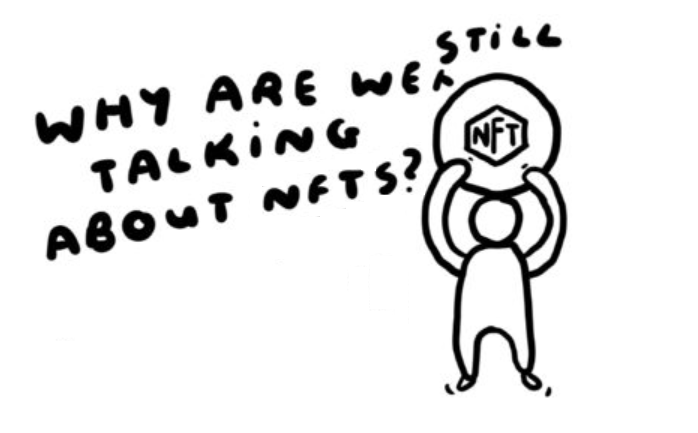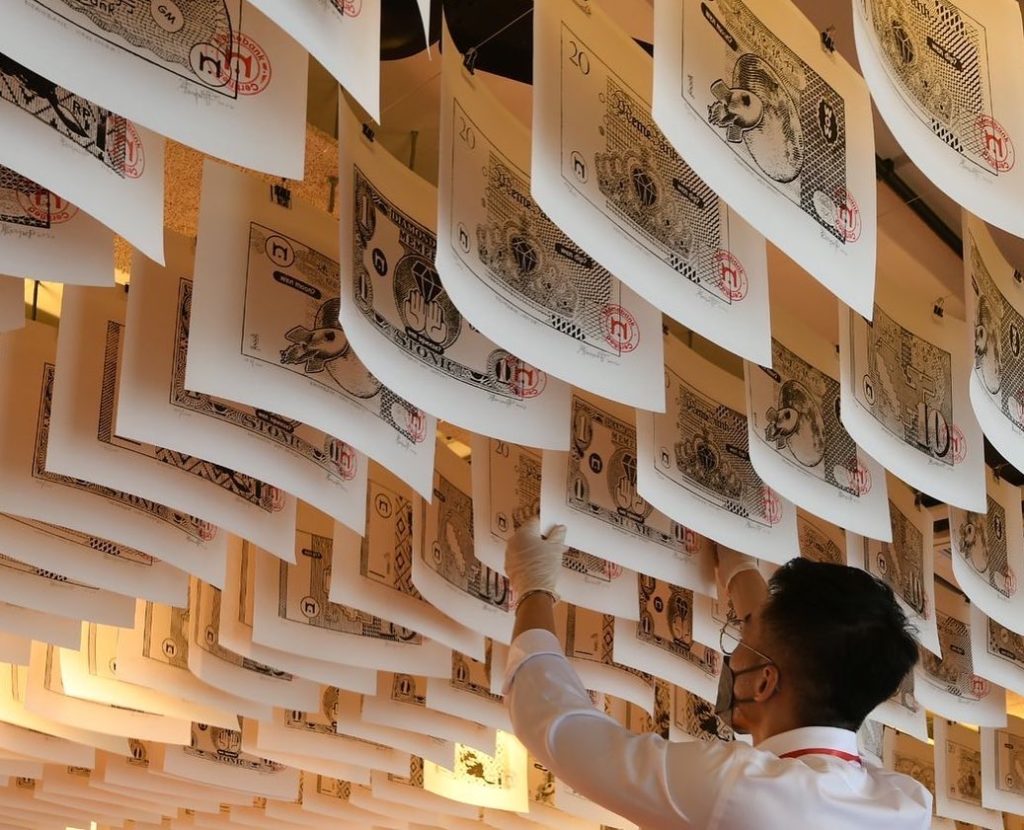
NFTs have potential to catalyse the art scene, so it may be worth understanding what the hype is all about.
Story and photos by AQILAH AMINUDDIN for LENSA SENI
Despite the negatives of NFTs that were discussed in previously, many of us are still talking about NFTs. This is because NFTs are a worthwhile consideration for those looking to start collecting, particularly in Malaysia. And for artists, their struggles can be partly alleviated by turning their work into NFTs.
NFTs may help in the case of authenticity and copyright issues, the complicated relationship between creator and owner.
Here’s the thing about commissioning artwork in Malaysia – a lot of clients feel that when they hire an artist to create an artwork, they own the piece along with the right to claim “I made this artwork”. There are cases of clients even requesting artists not to sign the art piece.
If you own a Picasso original, you earn the right to brag that you own a Picasso original, but you do not get to go around claiming you created that particular piece.
But some might say, ”But that’s a Picasso – and who are you?”
While NFTs aren’t perfect by far, the verified identities of the creator and owner and their relationship once an artwork is minted and purchased helps protect an artist’s brand and portfolio.
It also gives the message to art clients that they should be proud of their purchase and have trust in an artist’s work; that an artist isn’t just a tool or software to produce art to cater to their requests.
The art collector should understand that an artist’s worth comes together with their brand and identity, and they shouldn’t deny the artist the right to leave their signature on their artwork.
With NFTs clearly stating that an artist is creator, and owner the collector, this will help tremendously in art commissioning and trading.
NFTs are just another investment medium. The fact is art has always been an investment medium.
Traditional art collectors have long considered their art collection as an asset proving the point of how art has always been an investment medium, and artwork a benchmark of the value of the artist’s name.
But in the Malaysian context, with the general public opting to purchase art prints as a much cheaper alternative to owning originals, this builds the perception that art shouldn’t be expensive in the first place. There is nothing wrong in producing art prints – it is a cheaper option to get your art out there – but in a way, this reduces the artwork’s worth.
NFTs should be an investment option. With the base in cryptocurrency and a highly liquid secondary market, why not? Imagine the possibilities that will open up once NFTs are considered assets. The art market will boom, and the artist gets to retain the value of their brand and work.
But that brings us to the bitter question…
Is that what art is about in the first place – money?
There is absolutely nothing wrong with making money. Heck, what do we live on if we don’t have an income?

The issue of money encompassing life was brought up by Malaysian artist Red Hongyi when she came up with the NFT project, Memebank. Red and her team literally turned “money” into NFTs, and then made money from the sale of those NFTs, something she called a spoof of the fiat money system.
Memebank was launched on OpenSea in November 2021, and is currently online at www.memebank.live.
It can be rather disheartening to see all the hype that follows a successful NFT story. When an artist claims to be a full-time NFT artist, were they motivated by the thought that NFTs could bring them millions? Has that clouded their artistic integrity?
There should be a middle ground that allows one to benefit from NFTs, but not have to forgo the essence of creating and collecting art. Artists should create what is true to their brand, and not just jump on the next hot thing preferred by collectors. That’s the way to celebrate art making. And ask yourself this: Does the hype and money surrounding NFTs now justify its position as the “best” and only platform for art?
There is a place for NFTs in Malaysia.
Many Malaysians started talking about NFTs when Pentas, a Malaysian-made marketplace, launched in August 2021. Within six months, RM4.84mil worth of art was transacted on the site.
Despite the large number, there is still the question of whether or not Pentas is really helping local artists take advantage of NFTs, particularly those in traditional formats. While Pentas claims to be a marketplace that showcases heritage and culture through NFTs, it hasn’t yet garnered enough attention on an international level.

Still, there is hope. We saw legendary Malaysian cartoonist Ujang make up to 50.4BNB from his art, and in that way we can see it as cultural preservation and archiving. We also saw Faizal Rahmat, a 3D artist, selling his works of historical architecture and scenery on Pentas. While he has yet to make as much as Ujang, this can be seen as Pentas encouraging an appreciation of history through NFTs.

There is a long way to go for Pentas to live up to its claims, but it’s still early days. It would be refreshing to see traditional art forms like wayang kulit turned into NFTs.
NFTs are here and will probably be around for some time.
We’ve mentioned the worst to consider, but seriously, the upsides can be pretty decent for an artist. Any new technology is bound to have its hiccups, but as long as these are discussed, there is always a chance to improve and take Malaysian art to the next level.
Aqilah Aminuddin is a participant in the CENDANA ARTS WRITING MASTERCLASS & MENTORSHIP PROGRAMME 2021
The views and opinions expressed in this article are strictly the author’s own and do not reflect those of CENDANA. CENDANA reserves the right to be excluded from any liabilities, losses, damages, defaults, and/or intellectual property infringements caused by the views and opinions expressed by the author in this article at all times, during or after publication, whether on this website or any other platforms hosted by CENDANA or if said opinions/views are republished on third party platforms.
